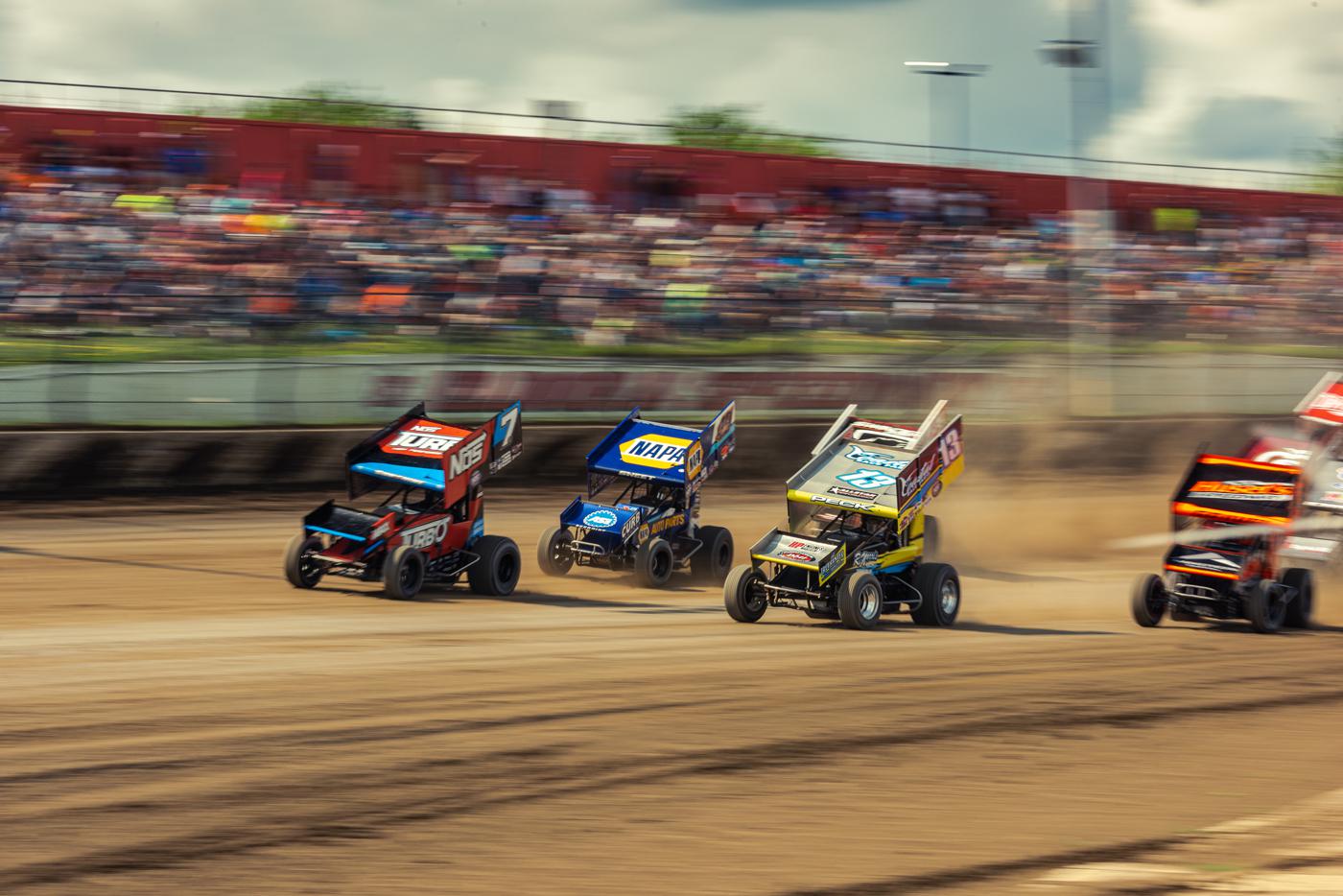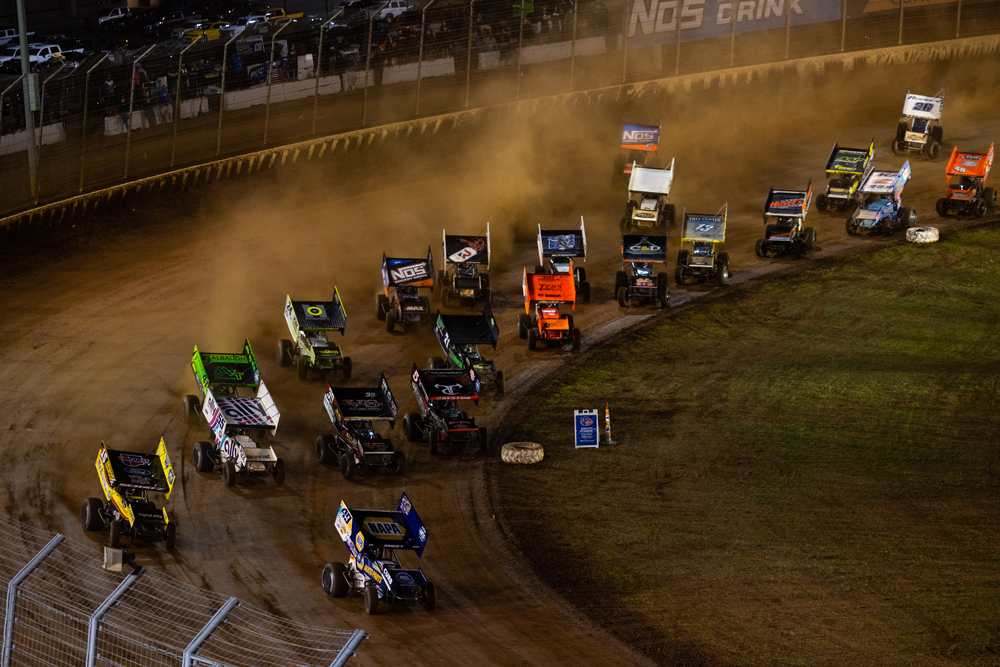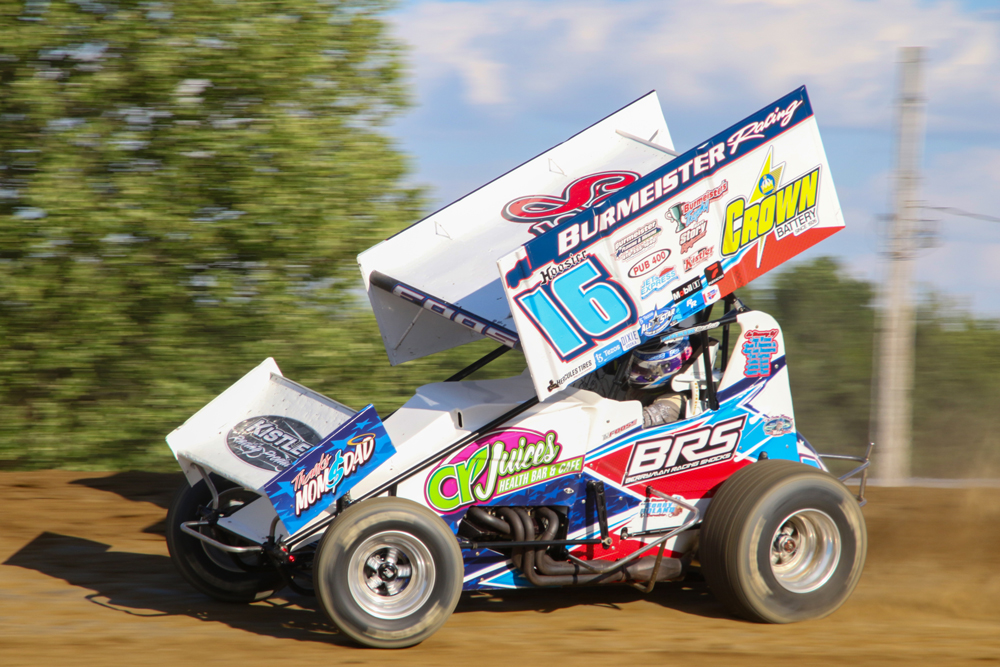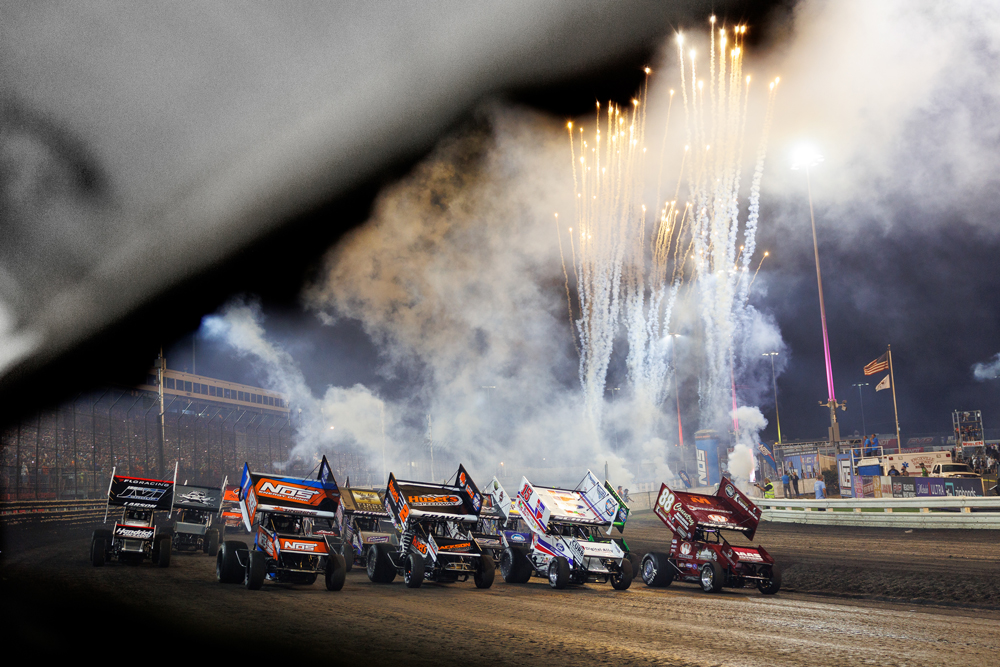Return of the 410s

Increased purses and new promotional strategies are helping to revitalize sprint car racing’s premier division.
Like so much in motorsports, 410 sprint car racing has seen its fair share of tumult in recent years. Beyond the inherent challenges associated with the pandemic, the division was already hampered by a continued rise in running costs, and a general sense that many organizers had shifted their energy elsewhere.
“Five years ago, 410 racing wasn’t doing so well over here on the West Coast. It felt like things were headed in the wrong direction,” noted Peter Murphy of Skagit Speedway, Burlington, Washington. “Back when I was racing, I chose to go to 410 because the money was pretty good, but unfortunately it got stagnant for a number of years. Eventually it became tough to get people interested in it—it just wasn’t bringing in enough cars when they turned up to a track. But over the last few years, we’ve seen people putting in a little more effort, and things are starting to change again. It’s not a simple task, but we’re seeing positive results. At the last race that we put on at Hanford, we had more than 30 racers running 410s. So, something seems to be working.”
Nick Graziano of the World of Outlaws series in Concord, North Carolina, agreed that the 410 division is now on the upswing. “Even through the COVID-19 years we progressed, and I think we actually came out ahead,” he said. “Between the iRacing events that we did and our connection with NASCAR, I think it brought a lot of new eyes to the sport, and a lot of new interest. We’re seeing the social numbers and the amount of viewers grow, along with the number of fans at the tracks, and even just the sheer number of sponsors that have come on in the last couple of years has increased.”

The rise in interest isn’t attributed to a handful of sweeping changes, but rather an array of refinements in approach and overall strategy. Those revamped tactics have not only made the division more attractive to racers and fans, they’ve also improved communication between various series, and that has helped to strengthen 410 sprint car racing on the whole.
Building Momentum
“When I came back in 2017, the series was in serious trouble,” said Sacramento, California’s NARC Fujitsu Sprint Car Series general manager Jim Allen. “We were averaging a whopping 19 cars per show, and the 360s were just killing it in California. But those racers were spending about as much money as the folks running in 410s, so we had to sit down and figure out what the problem was. For us, part of it was about firing up the old PR machine and building our brand.”
NARC averaged more than 28 cars per show last year, and Allen attributed much of the improvement to the concerted efforts of the folks who are running events at tracks like Skagit Speedway, and Silver Dollar Speedway in Chico, California.
Those efforts also resulted in an expanded race calendar that provided racers and fans with more options to get in on the action. The series had 16 races on the schedule when Allen returned to the fold in 2017; last year they ran 25. He said that sprint car teams collectively now have between 45 and 50 reasons to go race a 410 for more money as compared to the 360s that they may have gravitated toward in the past. While the year-over-year improvements have been incremental by his estimation, they appear to be setting up the division for sustained long-term growth.
Steve Sinclair of the Interstate Racing Association Outlaw Sprint Series in McHenry, Illinois, told us that the increased interest seen at the upper echelons of 410 sprint car racing has had a tangible impact on his series as well. “When Tony Stewart comes to race with us, or Kyle Larson, they bring a NASCAR fanbase with them. That definitely helps, and I think we’ve gotten a trickle-down effect from the growth that World of Outlaws has seen. When NASCAR was on hold during the pandemic years, some of those guys got more involved in sprint car stuff, and I think it helped a lot.”
Meanwhile Andrew Morfier, the director of operations at Attica Raceway Park in Attica, Ohio, pointed out that while the expense of campaigning a 410 remains a challenge for many teams, organizers are actively attempting to address the issue. “Costs are up, but that’s true of everything right now. The owners, teams, and drivers are absorbing that, so that’s where we try to help out with the purse. And I think we’ve got a really good point program for the 410s—we’re over $20,000 on the point fund.”
Improving purses and points funds have been one main focus for organizers at all levels of the sport in recent years. It’s another aspect of the collective challenge that can’t be solved overnight, but the trend is encouraging.
“We’ve got to give them what they’re worth,” said Murphy. “We’ve got a double-header this year that pays $1,000 to start and $11,000 to win. I think one of Chico’s events is up to $25,000 now, and Dirt Cup was $50,000 to win last year. Things like that naturally change peoples’ thought processes in a variety of ways. It gets the teams excited for the races, and that’s our job as promoters.”
IRA’s series has made similar improvements in recent years, but Sinclair said there’s still more work to be done. “The purses haven’t gone up at the rate that I would like them to, but we have a travel package for the teams that are full-timers with us, and a portion of our sanction fee goes into additional toll money for the teams. We’ve also got a pretty solid point fund for a regional series, and we’ve got a good contingency program as well. We give a couple of cars away at the banquet, along with wings, wheels, and some other things. Some of it has become tougher to get since the pandemic, but we work hard at it because it really helps the teams out.”
Top-Tier Attraction
While the bigger payouts are certainly part of the allure of 410 racing for teams, there are other aspects of the division that add to its inherent appeal. “Beyond events like Huset’s High Bank Nationals, which will pay $250,000 to win, 410 is where the big names are, and where the big stories are being told,” said Graziano. “This is where the greatest talents are competing. When you see big names coming in from other disciplines, they’re hopping in 410s.” That’s an exciting prospect from the perspective of fans and racers alike.
“One of my goals is to turn our top 15 drivers in the point standings into household names,” said Allen. “If you want to see someone who can beat the Outlaws when they come out, then you need to come to a NARC King of the West show. That’s something that the 360s just can’t give you.”

In 2018, a group of tracks, sanctioning bodies, chassis builders, and drivers created the Sprint Car Council. Along with collaborative discussions on cost containment and safety concerns, the council also helps to keep regional and national series on the same page when it comes to potential rule changes. Thanks to improved communication between the various series brought on by initiatives like this, the 410 has become a much more unified division across the country.
“Whether you’re regional or national, our rules are all essentially the same,” said Sinclair. “I think 410 racing, specifically, has done a really great job with that. One of my guys can race with the World of Outlaws, or the All Stars, or pretty much anywhere else they may want to go, and they’ll be legal.”
A big part of the appeal of 410 racing is the cars and the competition. “The thrill of the speed and the noise—people still love the noise of a 410,” said Morfier. “And 410 is an incredibly competitive division, so the racing is incredible. When the All Stars and Outlaws come in, we have strong showings from our locals that prove it.”
Getting The Word Out
Marketing and promotion are another aspect of the division that’s seen significant development over the past few seasons. The changes not only heighten awareness for longtime fans and veteran racers, they’re also grabbing the attention of a new generation of would-be spectators and competitors.
“At the end of the day, I can’t ask for more money if they can’t get it through the front gate,” Allen said. “So we’re tackling this from all sides. On the social media side, we set an annual target for how many followers we’ve brought in and how many likes the content is getting, and we’ve brought someone in to help us out on that side. Our Twitter account is blowing up, and we’re not done yet. We also have two Facebook pages—one’s a history page, and the other’s more focused on current events—plus Instagram, TikTok, and our YouTube channel. It’s all updated on a regular basis. But we’ve told our promoters that our PR efforts—the stories, the press releases, the profiles—everything we’re doing is designed to complement their efforts rather than replacing them. Old habits die hard, and I think some of these guys would rather place an ad in the newspaper like they used to, but that mindset is starting to change.”
Morfier said that there are situations where a localized approach can be particularly effective, but social media has largely taken over as medium of choice for Attica Raceway Park’s marketing efforts. “Some of the Outlaw races we’ll put on the radio,” he explained. “That generally stays within the local market, maybe a hundred miles or so. But when so many people tell us that they saw this or that on social media, it makes sense to focus most of what we’re doing there.”

Graziano also said that social media has become an integral part of World of Outlaws’ marketing and promotional strategy, but he’s quick to point out that each platform requires its own unique approach.
“I think the biggest thing for us is just getting those stories out there—the drivers, the crews, the events—and making sure that those stories are told properly. Facebook is still just as important as ever, and Twitter is good for race days when we’re doing a lot of live tweeting of the races. Instagram Stories have become a big deal, too. And we have a World of Outlaws TikTok as well. It’s one of the biggest social platforms for the younger generation, so that’s a world that we need to be in. Along with entertainment, we try to bring an educational aspect to what we post there by showing people the sound and speed of sprint cars. You never really know what’s going to go viral there. You just have to have fun with it, and people will pick up what they like.”
If you want to hit the ground running in that regard, Sinclair suggested bringing in someone who already speaks the language. “I’m old school when it comes to this sort of thing, but we have this kid who has been helping us out tremendously,” he explained. “He works at MyRacePass, so he’s up on all of this stuff. It’s been great to have young ideas in the mix—it has benefited us a lot.”
Murphy pointed out that it’s not only about reaching fans where they already are, it’s about bringing a new audience into the sport. “We, as promoters, have to adapt to what’s going on in the world. We can’t do what we were doing 10 years ago—or even five years ago—and expect to get the same results. The world is constantly changing, and it’s our responsibility to keep up. We’re using every avenue that we have available to us. You don’t have to do a dance on TikTok, but if you want to get new people involved, you need to be where they are in order to connect with them. Reaching the diehards isn’t enough.”
Sources
Attica Raceway Park
atticaracewaypark.com
Interstate Racing Association Outlaw Sprint Series
irasprints.com
NARC Fujitsu Sprint Car Series
narc410.com
Skagit Speedway
skagitspeedway.com
World of Outlaws NOS Energy Drink Sprint Car Series
worldofoutlaws.com/sprintcars/
 MEMBERSHIP LOGIN
MEMBERSHIP LOGIN JOIN PRI
JOIN PRI


